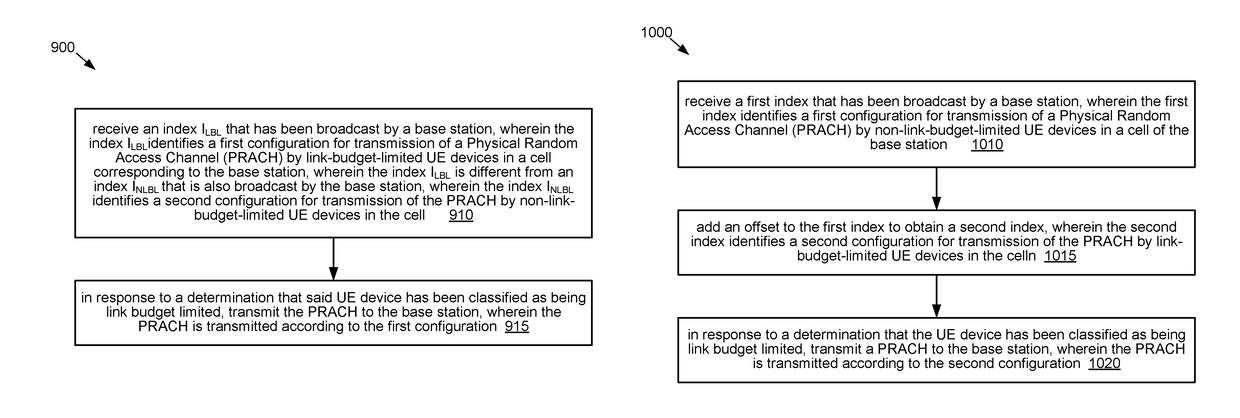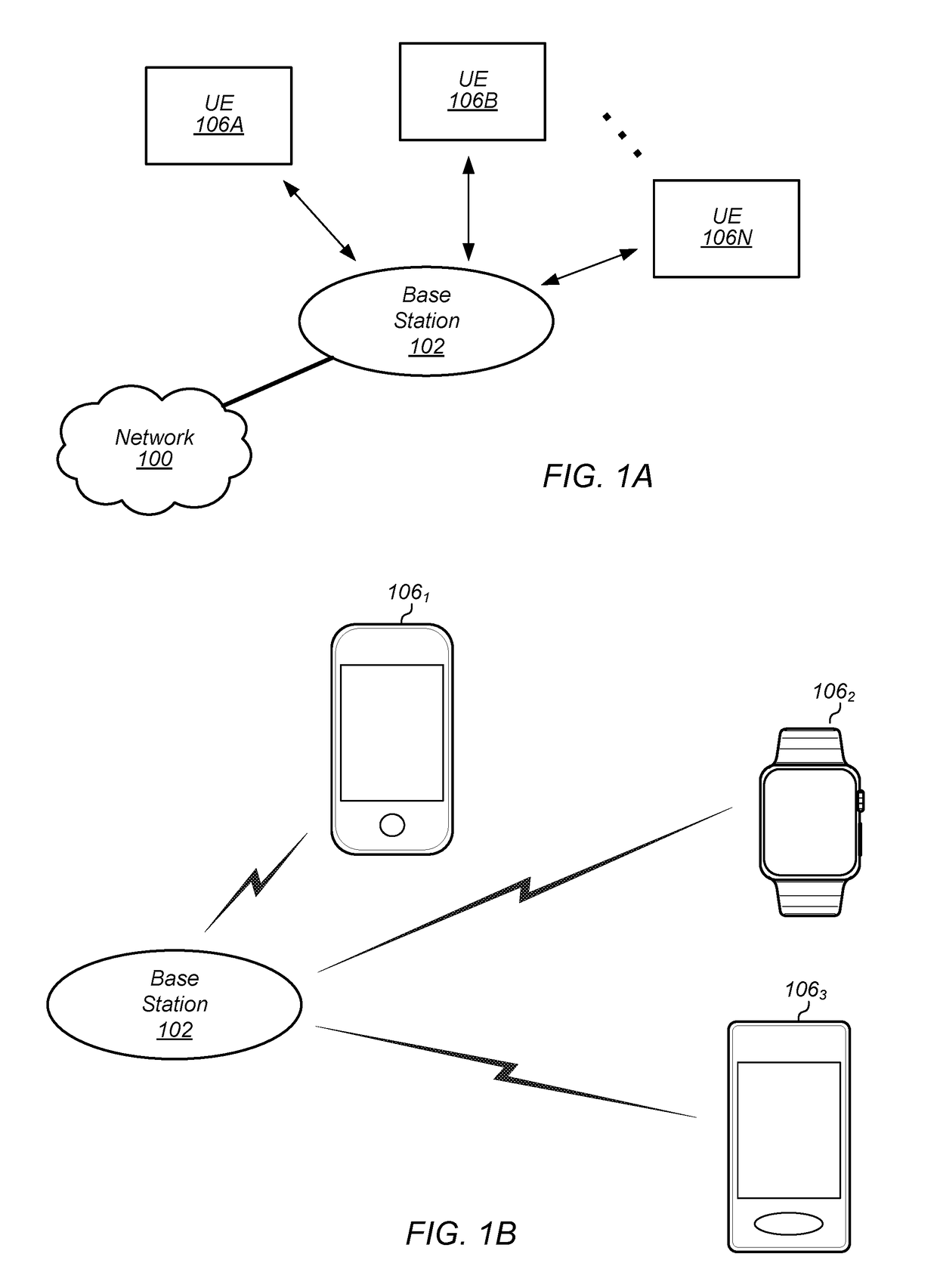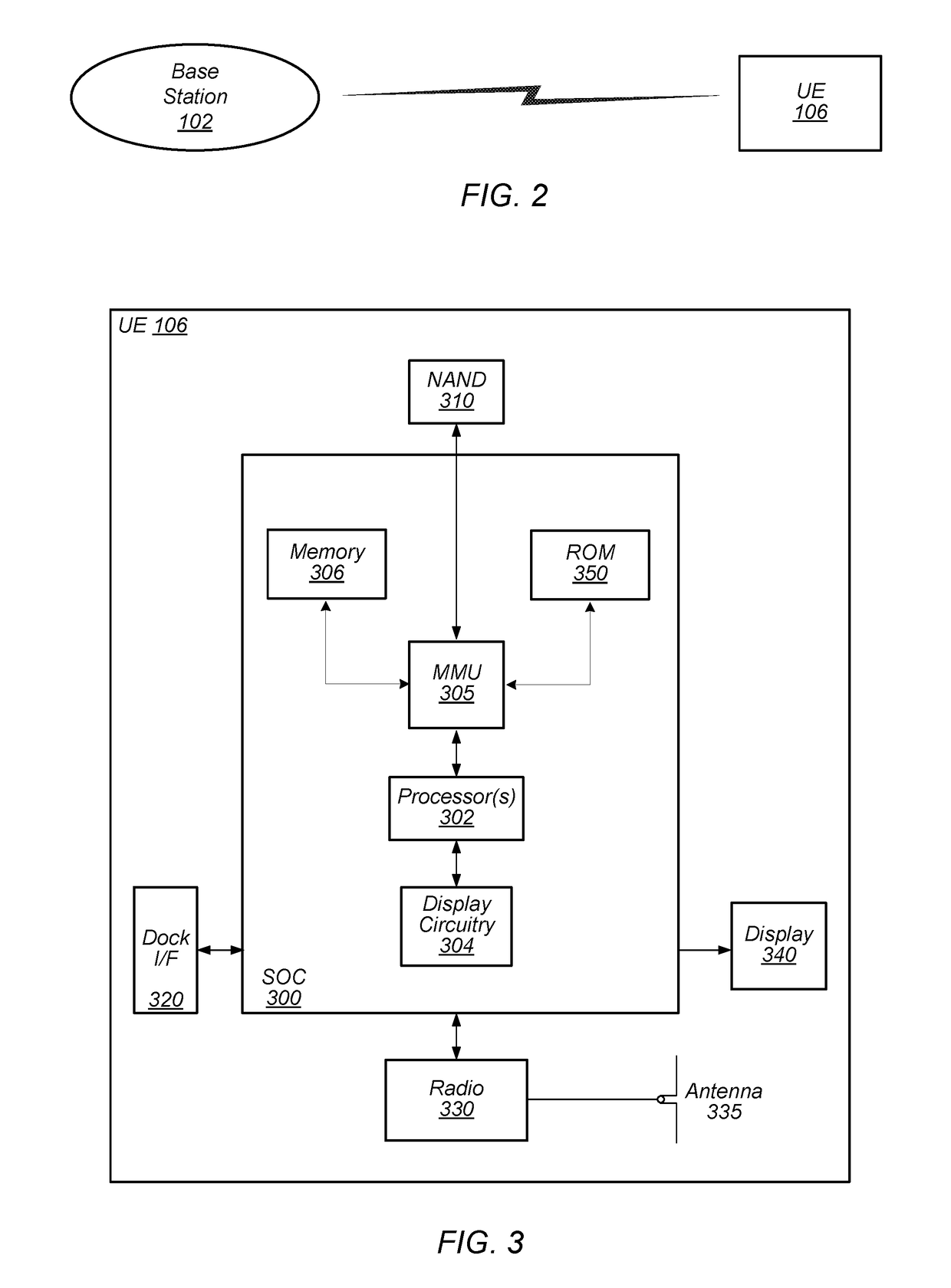Mechanisms to facilitate random access by link-budget-limited devices
a technology of link-budget-limited devices and random access, applied in the field of wireless communication, can solve the problems of link-budget-limited devices, lbl, difficulties in receiving messages transmitted by network base stations, etc., and achieve the effect of improving the random access procedure of user equipment devices
- Summary
- Abstract
- Description
- Claims
- Application Information
AI Technical Summary
Benefits of technology
Problems solved by technology
Method used
Image
Examples
Embodiment Construction
Acronyms
[0046]Various acronyms are used throughout the present disclosure. Definitions of the most prominently used acronyms that may appear throughout the present disclosure are provided below:
[0047]BS: Base Station
[0048]DL: Downlink
[0049]LBL: Link Budget Limited
[0050]LTE: Long Term Evolution
[0051]MIB: Master Information Block
[0052]NW: Network
[0053]PDCCH: Physical Downlink Control Channel
[0054]PDSCH: Physical Downlink Shared Channel
[0055]PRACH: Physical Random Access Channel
[0056]PUCCH: Physical Uplink Control Channel
[0057]PUSCH: Physical Uplink Shared Channel
[0058]RACH: Random Access Procedure or Random Access Channel.
[0059]RAR: Random Access Response
[0060]RA-RNTI: Random Access-Radio Network Temporary Identifier
[0061]RRC: Radio Resource Control
[0062]RRC IE: RRC Information Element
[0063]RX: Reception
[0064]SFN: System Frame Number
[0065]SIB: System Information Block
[0066]SIBn: System Information Block of Type n
[0067]TTI: Transmit Time Interval
[0068]TX: Transmission
[0069]UE: User Equ...
PUM
 Login to View More
Login to View More Abstract
Description
Claims
Application Information
 Login to View More
Login to View More - R&D
- Intellectual Property
- Life Sciences
- Materials
- Tech Scout
- Unparalleled Data Quality
- Higher Quality Content
- 60% Fewer Hallucinations
Browse by: Latest US Patents, China's latest patents, Technical Efficacy Thesaurus, Application Domain, Technology Topic, Popular Technical Reports.
© 2025 PatSnap. All rights reserved.Legal|Privacy policy|Modern Slavery Act Transparency Statement|Sitemap|About US| Contact US: help@patsnap.com



